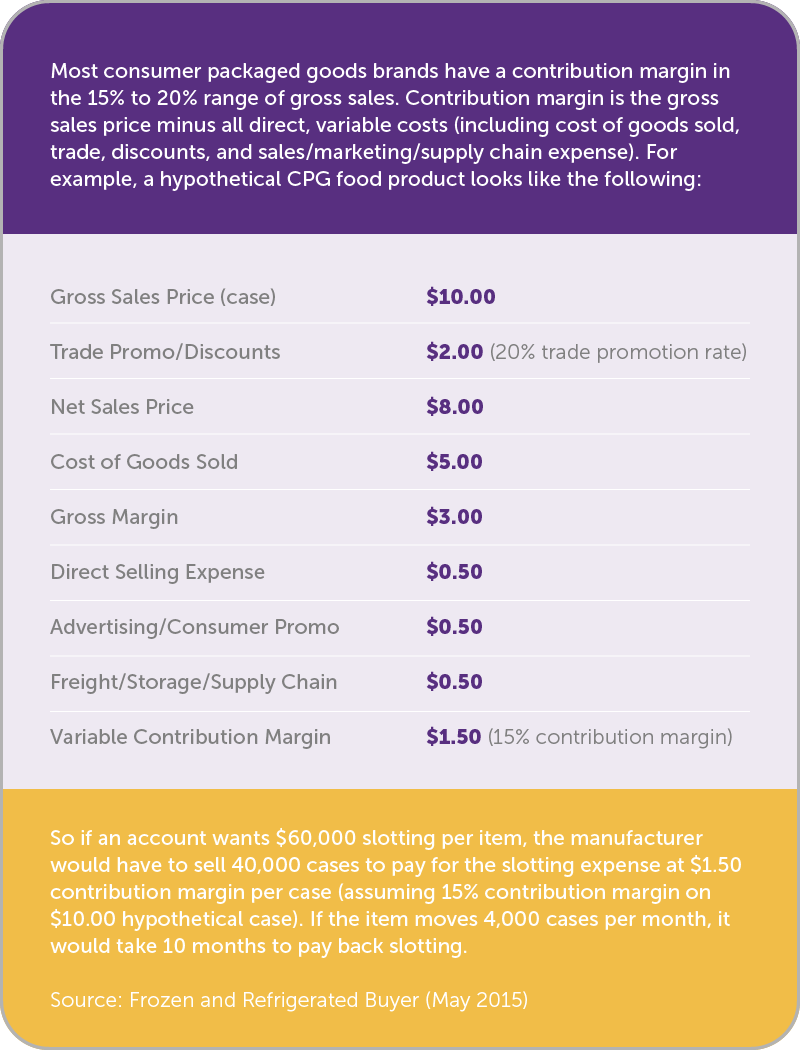Shelf space is a hot commodity, and CPG (Consumer packaged goods) companies often incur substantial costs to get their products in-store, secure premium placement, and run promotions. It’s critical that CPGs get the standard of execution they pay for. More importantly, they must be able to accurately evaluate if the rewards, in terms of incremental sales, outweigh these costs.
The ever-growing portfolio of brands and high competition for retail shelf space allows retailers to command considerable shelf space fees. There have been numerous arguments about whether the store shelf fees charged actually enhance space allocation efficiency or encourage backroom deals between stores and manufacturers that promote monopoly. But as it stands today, these are the broad types of costs incurred by manufacturers in the retail environment:
Here’s an explanation of the finance of promotion and slotting in frozen foods, courtesy Kevin Janiga, President of Winsights Marketing.

Combine these fees with auditing and data costs, and you get a sense of the what the manufacturer pays to be in a retail store and the potential profitability margins.
In order to achieve the right return on investment (ROI) on these costs, CPGs must ensure that they get the space they paid for – and that this space is actually maximizing sales, and that shelving principles are property executed in store.
A short-to-midterm evaluation cycle analyzing various micro and macro drivers of sales data such as performance is necessary for companies looking to increase sales and measure return on shelf related costs:
But all too often, many CPG companies don’t get the right distribution on new product items at key accounts. In terms of display compliance and shelf placement, there is little objective data available to manufacturers to truly know which retailer is executing well, and who isn’t. In addition to that, sales growth can improve with external factors like customer satisfaction or other channels such as online shopping, e-commerce reviews and social media.
With relevant and accurate data, CPGs can quickly learn if the cost of doing business with a specific retailer will return sufficient sales growth and improve their overall customer experience.
In our blog overall, we look at how CPGs can use granular, store and SKU-level in-store execution data from picking to checkout as powerful evidence to enrich ongoing conversations with retailers, allowing your sales team to successfully negotiate space allocation, product placement and associated fees for new products and existing ones. You can also view case studies on our site that dig into metrics within purchase behavior and customer behavior across a variety of channels.
Give us some info so the right person can get back to you.